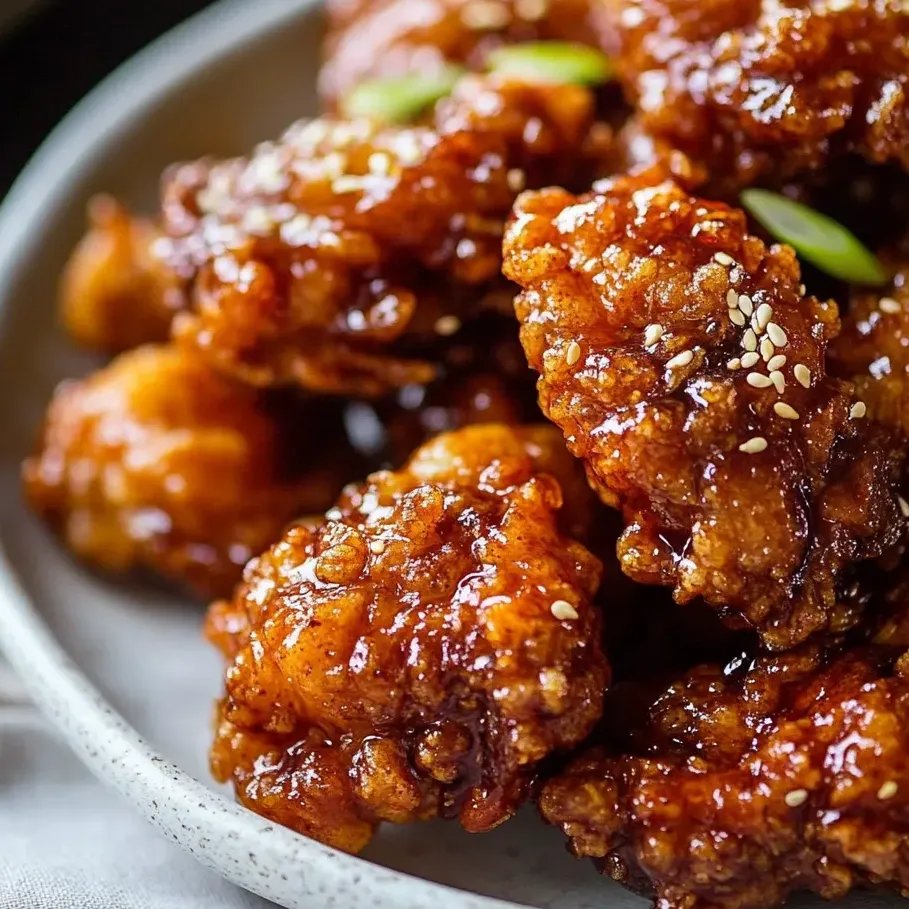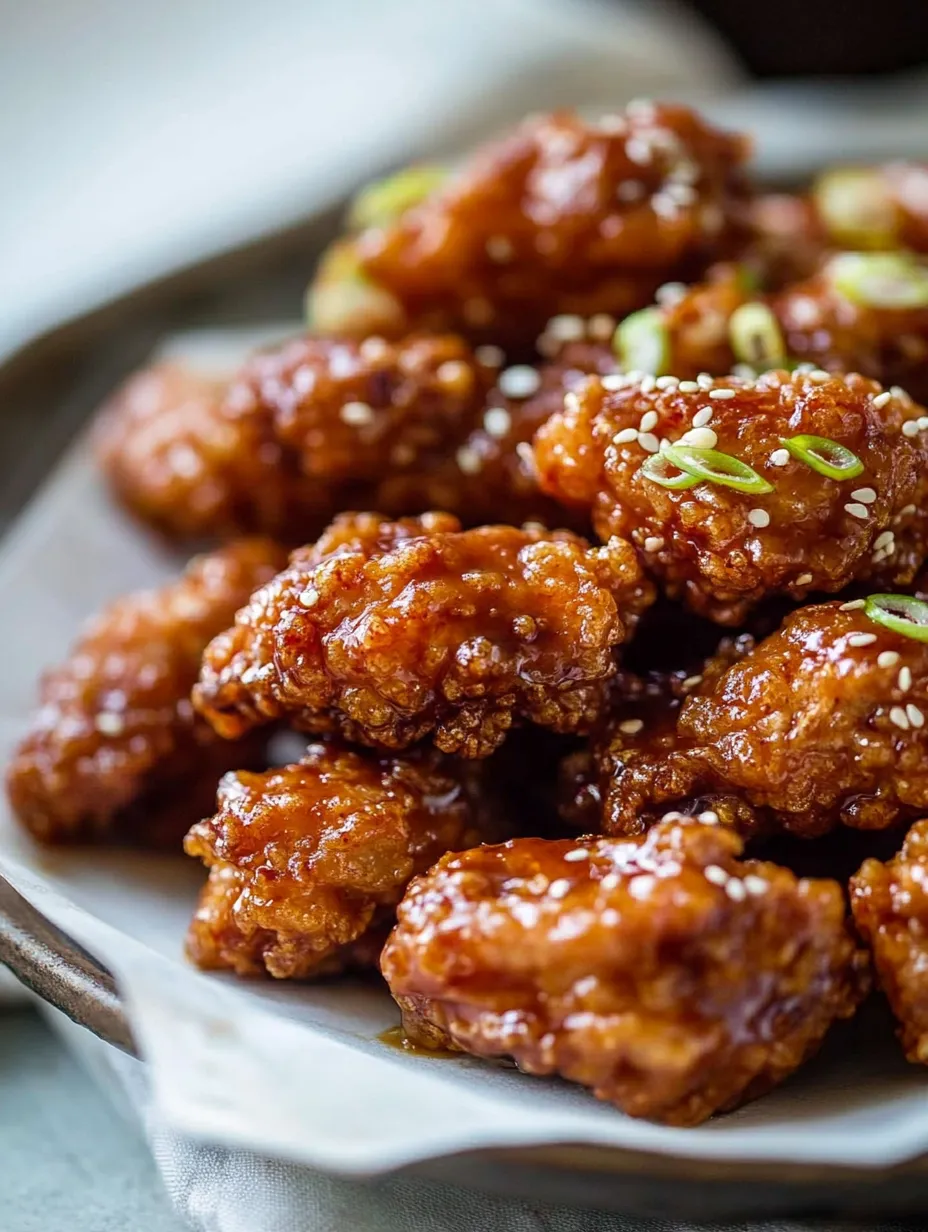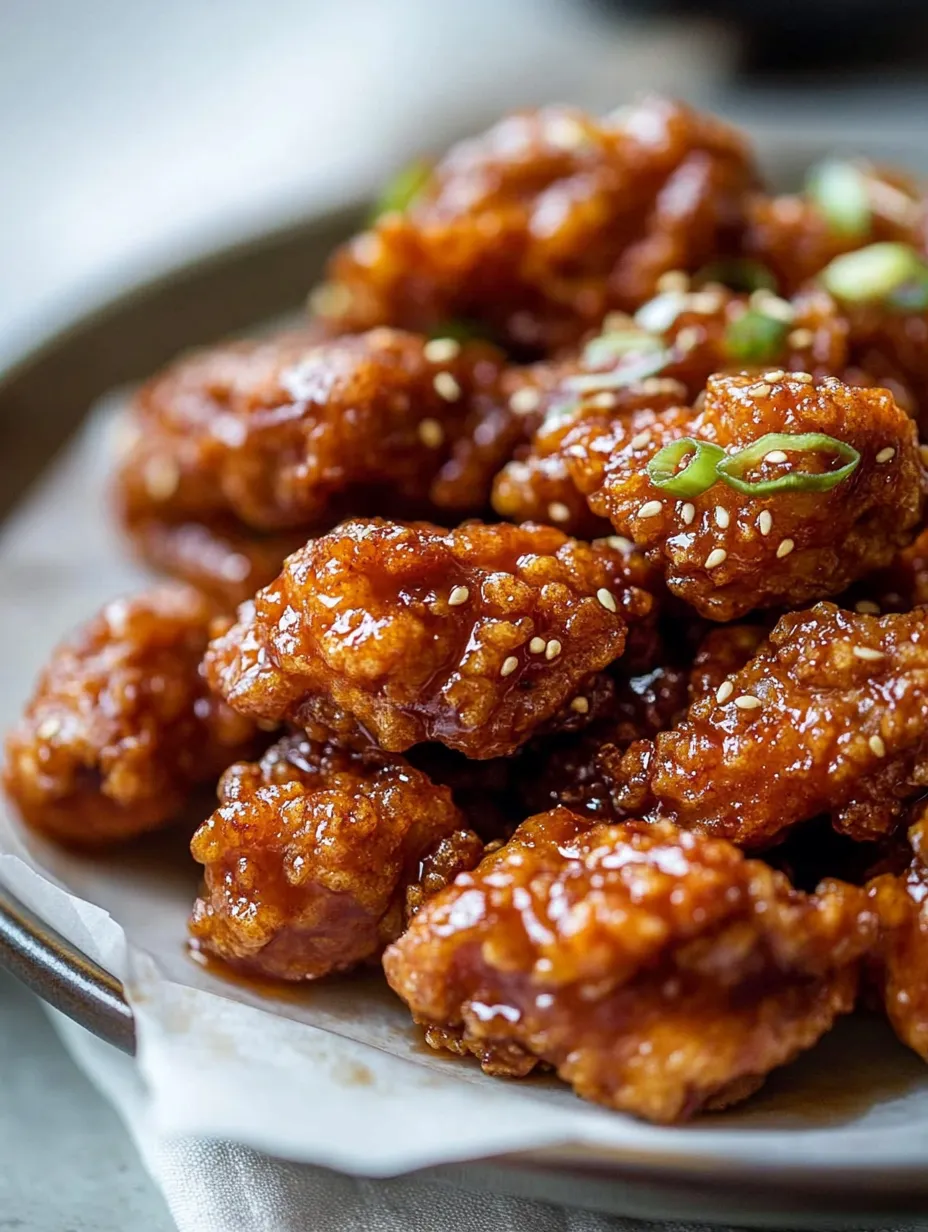 Pin it
Pin it
Dakgangjeong hits the spot every time with its sweet crunch and punchy flavors. You'll end up with chicken that's so crispy and juicy, covered in a sticky, savory glaze that's super addicting. It always wows a crowd or feels like a fancy treat when you want something special for yourself or friends on a cozy night in.
I whipped this up the first time when I really missed eating Korean street food, and it instantly became the top dish everyone requested at parties. The double-fry trick always keeps that chicken crispy, even under all the sauce.
Irresistible Ingredients
- Boneless chicken thigh or breast: stays juicy, easy to chop into bite portions
- Milk: softens meat and cuts down on any strong taste
- Freshly ground black pepper and salt: basic must-have flavors, go fresh for the best flavor
- Minced ginger and garlic: must for that real-deal Korean taste—fresh makes all the difference
- Rice wine: gives a light touch of sweetness—grab Mirin or sub with sake
- Corn starch or potato starch: coats the chicken for super crunch—pick potato starch for max crispiness if you can find it
- Deep-frying oil: canola or any plain oil that can take high heat is best
- Soy sauce: the rich, deep base for your sauce—darker is better here
- Mirin or another sweet rice wine: adds balance and a little more flavor
- Rice or apple cider vinegar: gives a mild sour punch to offset the sweet
- Gochujang (spicy chili paste): the classic Korean kick! Or swap soy sauce for less spice
- Honey or rice syrup: stickiness and sweetness—I like honey for its floral taste but rice syrup works just as well
- Toasted sesame oil: rounds everything out with a nutty finish—go for toasted for a deeper flavor
- Brown sugar: brings that rich, caramelly vibe
- Crushed peanuts or seeds: sprinkle over the top for a classic crunch boost
Go for thick, good-quality chicken with lots of marbling, and pick up the freshest aromatics and authentic gochujang you can to really bring out the flavors.
Step-by-Step Directions
- Finish with Garnish:
- Put your sauced chicken on a plate and toss over the chopped peanuts or your favorite crunchy seeds. Get it on the table quick so it’s extra crispy!
- Glaze the Chicken:
- Warm the sauce and drop in all the fried chicken. Mix everything until the glaze covers each piece perfectly.
- Second Fry:
- Heat the oil back up to 165°C. Pop all the chicken pieces in again, frying another minute or two until ultra-crisp and deep golden. Drain them well.
- First Fry:
- Pour about an inch of oil into a heavy pot and raise it to 165°C. Do half your chicken at a time so the pan’s not crowded—about three minutes per batch until lightly browned. Put cooked pieces on paper towels or a wire rack.
- Coat with Starch:
- Cover every piece of chicken in a good layer of potato or corn starch—don’t skimp, this is what gives the crisp!
- Make the Sauce:
- Add your sauce ingredients to a pot, mix, and heat to boiling. Turn it down and let simmer till it thickens—usually three to four minutes. Take off the heat and let it chill for a sec.
- Marinate Your Chicken:
- If you’re using milk, let the chicken soak in the fridge for at least half an hour, then drain well. Toss with salt, pepper, garlic, ginger, and rice wine (skip if you used milk). Let flavors mingle for about twenty minutes.
- Cut Chicken:
- Slice off any extra fat and cut the meat into even, bite-size chunks. This helps everything cook up the same and lets the sauce coat well.
 Pin it
Pin it
The kitchen always smells amazing after adding the honey to the sauce. It reminds me of family get-togethers every single time I make it. Total comfort vibes!
How to Store Leftovers
Keep leftovers in a sealed container in the fridge for up to two days. To keep that crunch, pop them in a hot oven or air fryer to reheat. Skip the microwave—it’ll make your chicken soggy.
Swaps You Can Make
No potato starch? Corn starch does the trick as well. Want it spicier? Add more gochujang. Allergic to peanuts? Toasted pumpkin seeds or sunflower seeds give you the same yummy crunch on top.
How to Serve It
You can't beat this with plain rice plus pickled radish and some kimchi. At parties, stick the pieces on skewers or serve in little bowls for easy sharing. It's also still classic with a cold beer on the side, just like you’d get on the streets in Korea.
 Pin it
Pin it
Fun Background
Way back, a similar version showed up in Korean temple kitchens, where they used sweet, soy-based sauces minus the spicy kick. Fast forward, and this crunchy chicken jumped into street stalls and restaurants and now it’s a must-have for family feasts.
Frequently Asked Questions
- → What makes Dakgangjeong different from other fried chicken?
This chicken gets fried twice for crazy crunch and gets coated in a Korean glaze that's sweet, tangy, and just spicy enough—with things like soy, honey, and gochujang mixed in.
- → Why is double-frying used in this dish?
Double-frying keeps the outside super crunchy so it won't go soggy after the sauce goes on. That's the trick for ultra-light bites.
- → Can I use chicken breast instead of thigh?
Either is fine! Thigh turns out juicier, but breast works too for something leaner and soft.
- → Is the sauce spicy?
If you use gochujang, it'll be gently spicy. Don't want spice? Just use extra soy sauce instead.
- → What garnishes pair well with this dish?
Chopped nuts or seeds add crunch, but you could also throw on sesame seeds or sliced green onions for some zing.
- → Can this dish be prepared ahead of time?
For best crunch, coat the chicken in the sauce right before eating. You can fry it ahead, then heat and dress just before serving.
